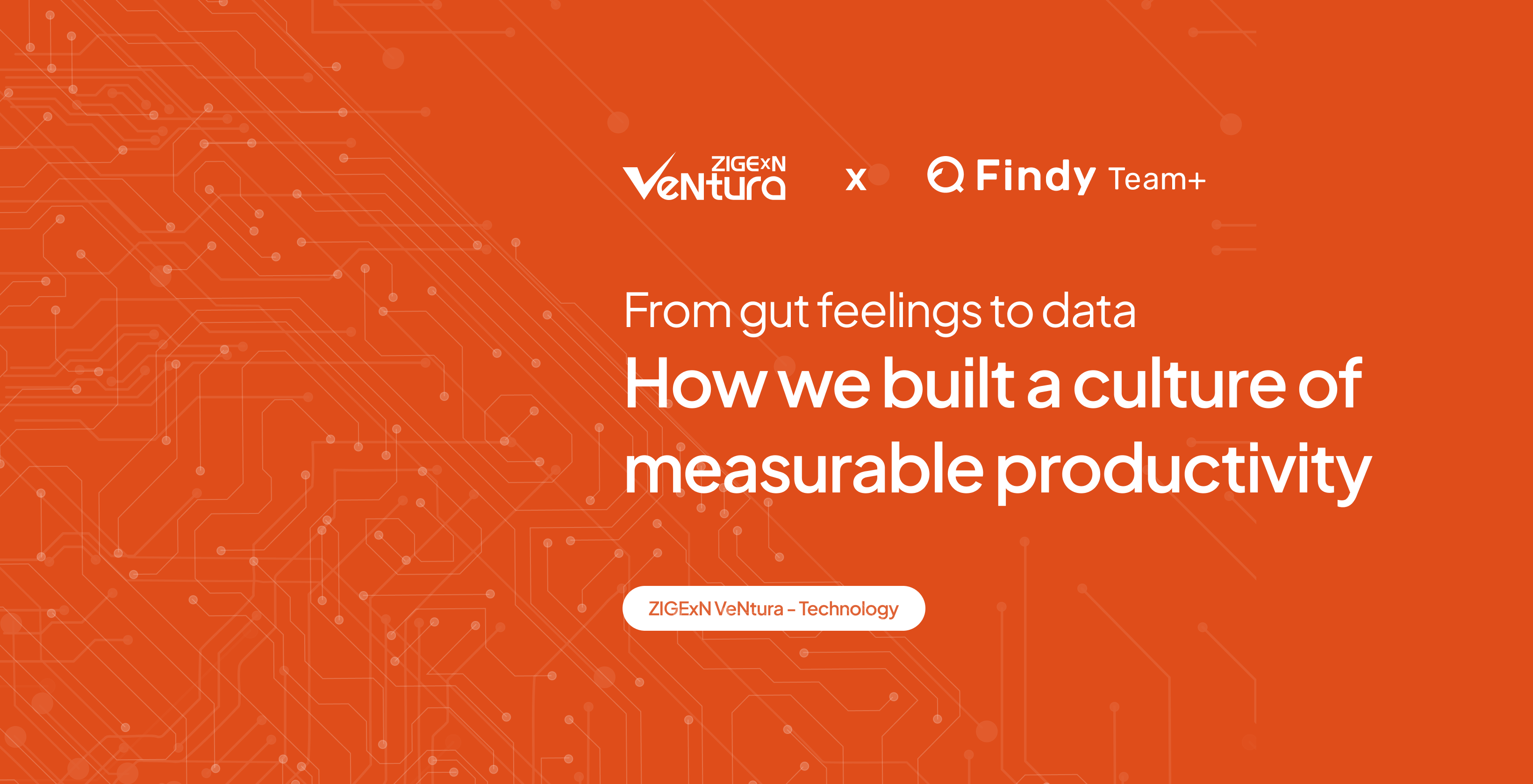At ZIGExN VeNtura, we’ve always valued speed, collaboration, and responsiveness, especially across our Japan–Vietnam development system. But as our projects and teams grew, despite being busier than ever, our actual development output wasn’t accelerating at the same pace.
It wasn’t that people weren’t working hard. On the contrary, they were. But decisions were based on gut feeling. Bottlenecks were felt but not proven. Everyone had ideas, but few had data. We knew we needed to shift the conversation from assumptions to evidence.
That’s when we introduced Findy Team+.
The problem: too many assumptions, not enough clarity
Before Findy Team+, we tracked productivity using spreadsheets and custom tools we built ourselves. But our system had a major blind spot: it only measured the Vietnamese side of our workflow. Testing, final reviews, and releases, often handled in Japan, were out of view.
Sometimes it felt like tasks were stuck somewhere, but no one could say exactly where or why. A task might be “done” on one side, but still far from release. Review times varied depending on the person. Testing sometimes took longer than coding itself. But it was hard to verify these hunches.
We needed a common language to talk about productivity. One that didn’t depend on guesswork, and one that both our Japan and Vietnam teams could trust and act on.
Why we chose Findy Team+
What attracted us to Findy Team+ was its ability to visualize the entire development cycle, across both countries and all processes. For the company, our priority wasn’t just creating dashboard but was about building a shared understanding of where our time actually went.
Findy Team+ made it easy to track the Four Key Metrics: lead time for changes, deployment frequency, change failure rate, and time to restore service. More importantly, it helped us break those down into smaller, actionable pieces like:
- Average time from commit to review request
- Time from review to approval
- Time from approval to merge and release
Having these metrics visible for both Japan and Vietnam gave us something we didn’t have before: context. And from there, we were learning why they happened beside fixing delays.
What happened next: Data changed the culture
We started with a simple goal: reduce Release Lead Time per Pull Request by 20% in 3 months. The average time before Findy Team+ was about 230 hours. This might sound ambitious but we had a clear plan to achieve this.
Each side took ownership of different parts of the process. For example:
- Vietnam teams focused on code quality, quicker review cycles, and smart test automation
- Japan teams looked at reducing waiting time for final testing and merges
- Bridge software engineer Mr. Luu facilitated smoother communication and followed up on delays
We also adopted small but impactful changes, like rotating reviewers more evenly, setting Slack reminders for pending tasks, and proactively resolving blockers before they escalated.
The results:
- Lead time dropped by ~30% in 3 months
- Time from opening to review improved by 40 hours
- Engineers became more proactive in suggesting workflow changes
- Discussions shifted from “I feel like it’s slow” to “Let’s look at the data”
The biggest win we got wasn’t just faster development but most importantly, the culture of shared ownership and constructive improvement that followed.
What we learned
1. Productivity is built together
Improving development speed isn’t about pushing people to work harder or faster. It’s about working smarter as a team, such as spotting where things slow down, and finding solutions together. We realize that real impact comes when everyone shares ownership of the process.
2. Data changes the way we talk
Numbers don’t just point out problems but they give structure to the conversation and the problem we’re trying to solve. Instead of vague impressions like “it feels slow,” we could say, “This stage consistently takes X hours. How do we reduce that?”. This way made discussions more focused, fair, and collaborative.
3. When problems are visible, people act
Once delays and bottlenecks were clearly shown with the reason, teams became naturally motivated to fix them. Even junior members who used to hesitate felt empowered to contribute ideas. Before Findy Team+, we didn’t acknowledge that visibility sparked ownership. And when we recognize it, that’s where change really started.
What’s next: Layering in AI
Now that we’ve built a foundation of measurement, the next step is to combine data with automation. We’re starting to layer in tools like:
- Cursor, an AI code editor that helps with investigation, generation, and testing
- Devin, our autonomous AI software engineer
- Automated review systems to catch issues early and reduce time spent on basics
As we scale these tools, we’ll use Findy Team+ to validate whether they’re truly accelerating our process or just adding noise.
The end goal we would like to have is a development culture that’s fast, smart, and self-improving.
A final thought
The power of Findy Team+ wasn’t just in its charts or KPIs. It was in how it helped our teams talk, align, and improve across borders, languages, and workflows. From here, we can stop guessing and started learning so better collaboration can naturally follow.






